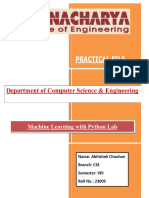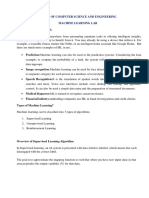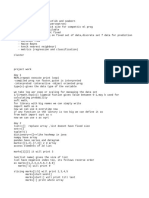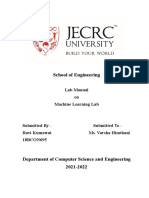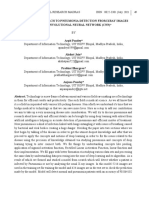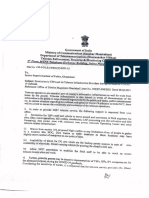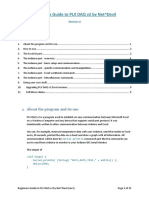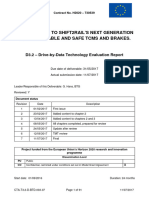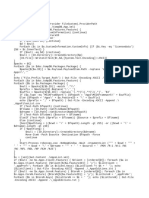0% found this document useful (0 votes)
11 views61 pagesMachine Learning Lab Manual - Record
The document outlines a series of machine learning experiments implemented in Python, including probability calculations using Bayes' rule, data extraction from databases and Excel, and various algorithms like k-nearest neighbors, linear regression, K-means clustering, Naïve Bayes classification, and genetic algorithms. Each experiment includes a detailed algorithm, program code, and expected outputs. The content serves as a practical guide for applying machine learning techniques using Python.
Uploaded by
maddinenivenkateswarlu42Copyright
© © All Rights Reserved
We take content rights seriously. If you suspect this is your content, claim it here.
Available Formats
Download as PDF, TXT or read online on Scribd
0% found this document useful (0 votes)
11 views61 pagesMachine Learning Lab Manual - Record
The document outlines a series of machine learning experiments implemented in Python, including probability calculations using Bayes' rule, data extraction from databases and Excel, and various algorithms like k-nearest neighbors, linear regression, K-means clustering, Naïve Bayes classification, and genetic algorithms. Each experiment includes a detailed algorithm, program code, and expected outputs. The content serves as a practical guide for applying machine learning techniques using Python.
Uploaded by
maddinenivenkateswarlu42Copyright
© © All Rights Reserved
We take content rights seriously. If you suspect this is your content, claim it here.
Available Formats
Download as PDF, TXT or read online on Scribd
/ 61
